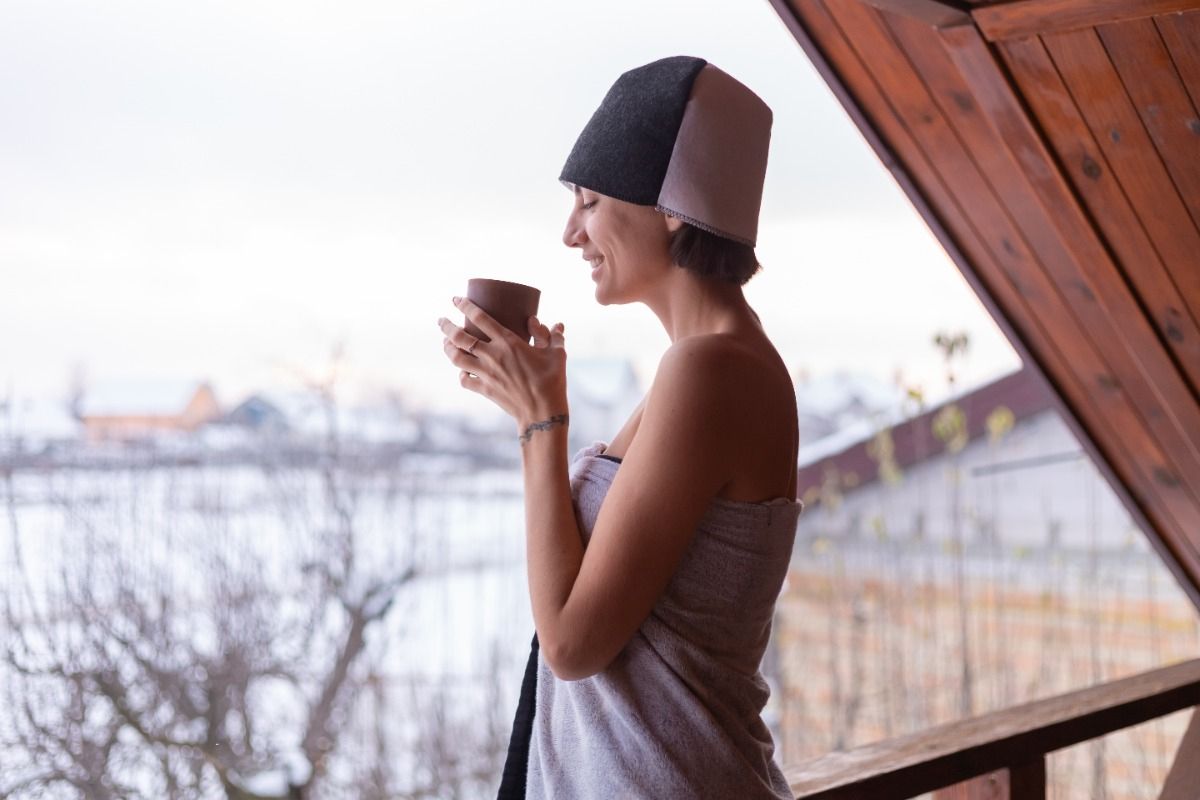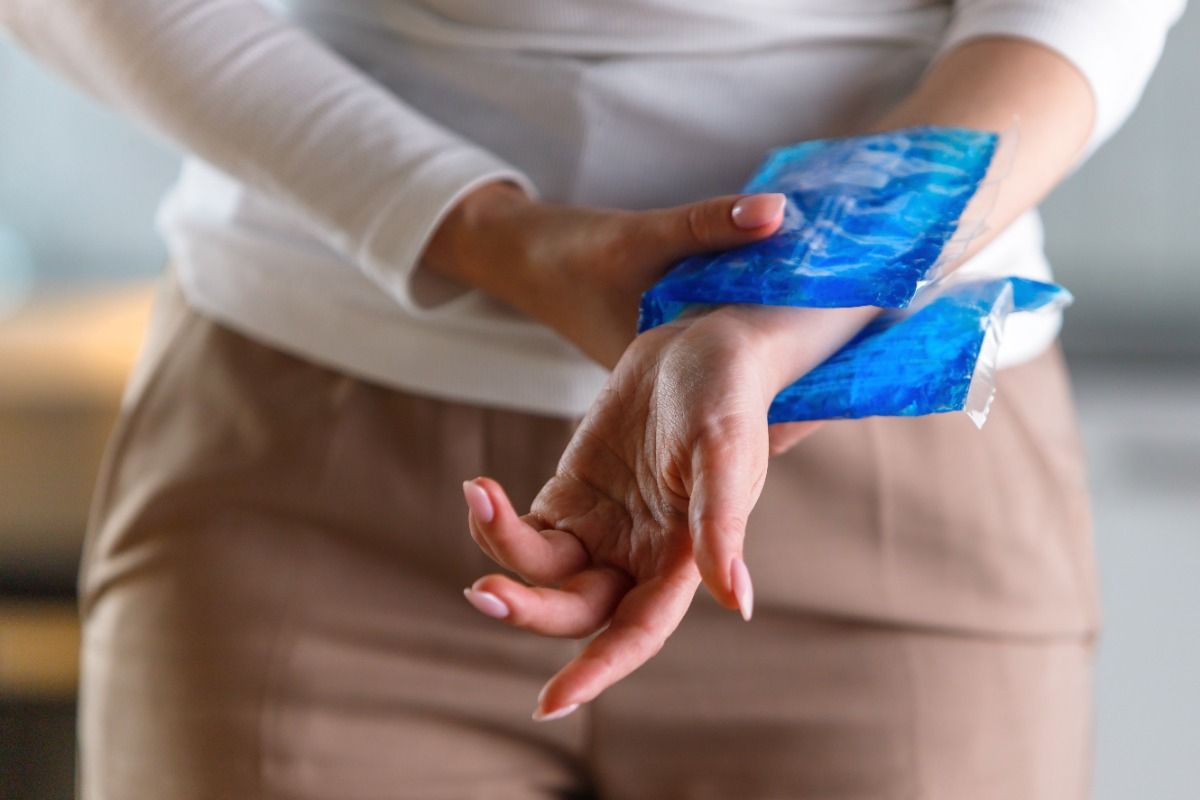
It’s common to tend to avoid the cold, but there are many health benefits of cold therapy, which is why many spas have cold pools available. The idea of jumping into a cold pool at a spa straight after a steam session, or taking an icy cold shower after a workout isn’t appealing for everyone. Most of us prefer to avoid exposing ourselves to cold temperatures. However, we might be more willing to submerge ourselves into cold water if we were more educated on the benefits of cold therapy.
The benefits of immersing yourself in cold water are touted by athletes, trainers, celebrities, and influencers alike. So, what exactly is cold therapy, what’s the science behind it, and why is it good for you?
What is Cold Therapy?
There are many different forms of cold therapy. From using ice packs to soothe your muscles after a workout and experimenting with cooling gels and creams, to immersing yourself in cold pools or even taking an ice bath. The most common method of accessing cold therapy is through water, or “hydrotherapy”.
With cold water therapy, cold water (usually under 59°F) is used to stimulate the body. While concepts such as the “Wim Hof method” for cold therapy have recently gained attention thanks to their inclusion in the workouts of Nicole Kidman and Lady Gaga, cold therapy has been around for a millennia.
For centuries, people have believed in the potential of cold water to increase energy, stimulate blood flow, reduce muscle soreness, and accelerate healing.

What are the Benefits of Cold Therapy?
Though research is still ongoing on the impact and all the benefits of cold therapy, various studies have begun outlining a series of advantageous effects. The most commonly referenced is reduced muscle soreness.
Experts believe soaking in cold water, or using ice packs for short periods after exercise could lead to reduced muscle soreness long-term. A small study in 2011 found cyclists experienced less soreness after intense training sessions after they were immersed in cold water for 10 minutes.
Another report from 2016 found soaking in a pool of cold water (around 53°F) reported less muscle soreness than those who had no hydrotherapy.
Medical experts believe cold water assists with pain by causing blood vessels to constrict, reducing blood flow to the area, and minimizing inflammation. Aside from helping with muscle aches, cold therapy can also:
- Regulate body temperature: If you’re overheated, cold therapy can be a great method for getting your body temperature back on track. An analysis in 2015 found contact with cold water cooled overheated people faster than simply sitting and waiting to cool down. The key to success was full body immersion, according to the researchers.
- Reduced depression: Cold water may not cure mental health conditions, but it can alleviate anxiety and depression according to some studies. One case study found a woman who committed to regular cold water swimming noticed her symptoms decrease so significantly she was able to stop taking her medication. Another report found a program of short twice-daily cold showers reduced depressive symptoms.
- Improved immunity: Some evidence suggests cold water therapy can stimulate the immune system and the ability to fight illness. According to one study, cold water immersion techniques helped to promote the production of more anti-inflammatory chemicals in response to bacterial infections. Notably, this study did use other forms of meditation and careful breathing techniques to support immunity too.
The Incredible Benefits of Ice Baths
There are various forms of cold water therapy, from jumping in a cold lake (safely), to having a cold shower. However, ice baths are some of the most popular means of cold water therapy. Similar to other forms of cold water therapy, ice baths can assist with easing sore and aching muscles.
Experts also believe ice baths can limit the inflammatory response, decreasing the amount of swelling you experience after an injury or workout, so you can recover faster.
Many athletes believe ice baths help to improve their performance in a multitude of ways. Ice baths are believed to positively influence the central nervous system, aiding in sleep and reducing the risk of insomnia after training.
Some athletes feel immersing themselves in ice allows their body to recover faster, which improves reaction time in future workouts. Others believe the immunity benefits of ice baths ensure they’re more likely to continue with their exercise regimes. One study found people who use cold therapy are 30% less likely to call in sick for work.
There’s even a theory that ice baths can help train the vagus nerve – linked with the parasympathetic nervous system, which helps us respond to stress more effectively.
From a more spiritual perspective, ice baths are often part of self-discovery and wellness retreats as part of a ‘cleansing’ ritual. The ice bath ritual is for those who want a clean slate, purifying themselves to make room for more positive energy, and submerging oneself in an ice bath can symbolise rebirth or starting over after trauma.
The potential benefits of cold therapy have been believed in for centuries. As mentioned, many spiritual people believe cold showers and ice baths are a powerful spiritual tool. Cold baths are associated with cleansing and rebirth, ideal for starting fresh.

Can Cold Therapy Help with Weight Loss?
What if you’re looking for ways to lose weight? Some influencers and celebrities believe cold weather exposure can help boost calorie-burning capabilities. This is why some people believe exercising in winter is more effective for weight loss than exercising in summer. Studies show drinking cold water can potentially assist in boosting metabolic rate. However, it’s difficult to say for certain if cold water immersion has the same effect.
Additional research is necessary, but some reports are positive. For instance, a report into the Korean women who have worked in the cold waters of Jeju island for generations found their basal metabolic rate was higher during winter than in summer.
Another research review also found brief immersions in cold water may increase metabolism, but there aren’t many studies showing ice plunges can significantly boost weight loss.
How to Use Cold Water Therapy
If you’re looking to test the benefits of cold water therapy yourself, it’s important to be cautious. Check with your doctor first to ensure it’s safe to expose yourself to extreme temperatures if you have any underlying health conditions.
Don’t engage in any cold therapy or hot-and-cold therapy if you have a heart condition.
If you want to try cold water therapy, start slowly with your exposure, taking luke-warm showers, and gradually dropping the temperature. Once you feel ready, you can jump into cold showers, and get used to the cold. It may feel uncomfortable at first, but soon you’ll be able to power through and withstand a 5 minute cold shower. Only once you’re fully comfortable with your cold showers should you try an ice bath.
Add ice to the bath water gradually, until the temperature is between 50°F and 59°F, and stay submerged for no more than 15 minutes. If you’re concerned about your potential response to cold water therapy, it might be worth having someone nearby, just in case.
When you get out of the cold water, warm up quickly. Your body temperature can continue to drop for a significant amount of time after you leave the water.
Dry off quickly and dress in dry, warm layers, even better into clothes warm from the dryer. You could also drink a warm cup of tea and a bite to eat, to start getting your body temperature back to normal.
Don’t shock your body by jumping from an ice bath into a really hot shower, however. Try warming up on your own first, and then it’s okay to take a warm shower, just not a scalding hot one.
If you’re planning on using an outdoor body of water (such as a cold lake) for your cold therapy, make sure you have someone with you. Cold water can have a profound effect on your body and circulatory system. If you panic in a body of cold water, you could be in significant danger. It’s best not to head to a glacier lake alone.
Hot-and-Cold Therapy
Some spas have both hot pools (hot tubs) and cold pools as part of their hydrotherapy amenities. This is because hot-and-cold therapy, where you transfer from a hot pool to a cold one, can help stimulate the mind, improve the mood, reduce inflammation and it also certainly helps improve blood circulation. Hot-and-cold therapy stimulates blood flow in the body, but it’s best to do it with someone, rather than doing it alone.
Is Cold Water Therapy a Good Idea?
Research into cold water therapy is still somewhat limited. However, centuries of anecdotal evidence suggest it could have a number of valuable benefits for the right people. The key to success is keeping your cold water immersions brief, and making sure you follow the right safety precautions.
Ice baths and cold water therapy can help you reduce muscle soreness, reduce inflammation, stimulate blood flow, increase energy, improve your mood, and even strengthen your immune system. In some cases, it may help sharpen your mental focus, and increase your metabolism.If the idea of taking ice baths doesn’t appeal to you, use your CircleDNA insights to discover some other, less shocking ways to improve your health and immunity.







This Post Has One Comment
Comments are closed.